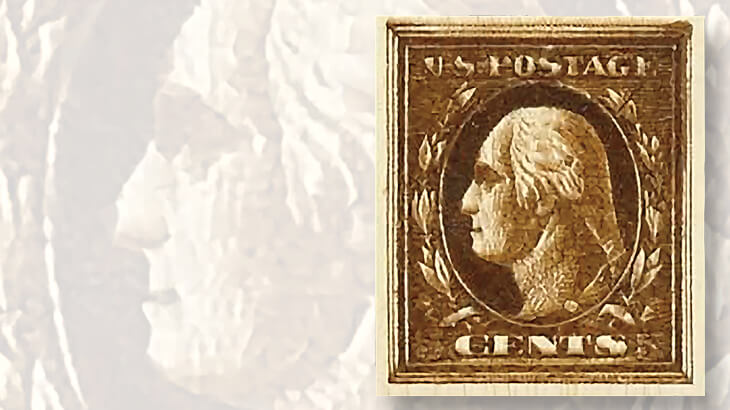US Stamps
If you want to collect test stamps, start with this issue: Stamp Market Tips

By Henry Gitner and Rick Miller
Test stamps form one of the more esoteric back-of-the-book collecting specialties.
Also known as dummy stamps, test stamps have been used since the 19th century for a number of reasons: to test stamp production equipment, in the development of stamp vending equipment, and in the development of stamp affixing equipment.
Test stamps have been produced by both private companies and by the U.S. government. Most test stamps are very scarce because they were never intentionally distributed to the public. On the other hand, the market for test stamps is relatively small, so many are quite affordable.
Connect with Linn’s Stamp News:
Sign up for our newsletter
Like us on Facebook
Follow us on Twitter
A good issue with which to start is the 1912 brown George Washington test stamp (Scott TD51). The design of the imperforate stamp produced without gum is based on the Washington stamps of the contemporary Washington-Franklin definitive stamps, and as such it appeals to collectors of those issues. The test stamp was produced to test a photo-etching process by Bruckmann A.G. of Munich, Bavaria.
The 2016 Scott Specialized Catalogue of United States Stamps and Covers values the stamp at $100. A pair is valued at $200, and a block of four is valued at $450. This test stamp is rarely encountered and is an excellent buy in the grade of very fine or better at the Scott catalog value.
MORE RELATED ARTICLES
Headlines
-
US Stamps
Oct 9, 2024, 3 PMProspectus available for Pipex 2025
-
US Stamps
Oct 9, 2024, 2 PMGratitude for Denise McCarty’s 43-year career with Linn’s
-
US Stamps
Oct 9, 2024, 12 PMWorld’s first butterfly topical stamp in strong demand
-
World Stamps
Oct 8, 2024, 3 PMRoyal Mail’s Oct. 1 definitive meets new international standard rate








